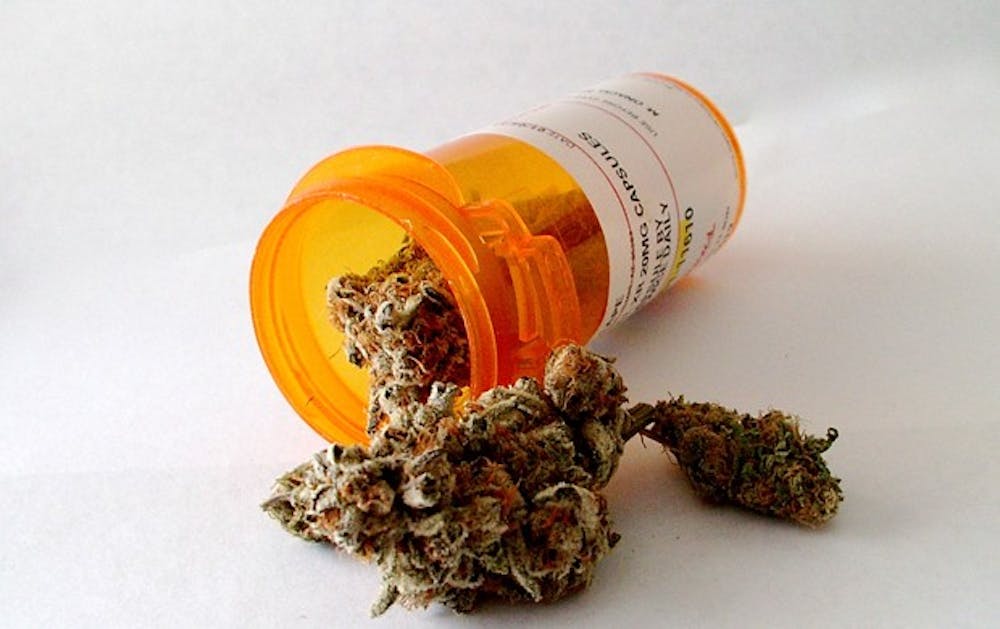It's been 35 years since Bob Marley and Peter Tosh sang “Legalize It,” and although the notorious green plant is not quite legalized in Arizona yet, supporters of medical marijuana sang along with praise this past November.
But since the passing of Proposition 203, media coverage of the movement has lessened. Many now find themselves relating to the lyrics of another infamous stoner tune: the Kottonmouth Kings classic "Where's the Weed At?”
Where is the weed at? What is the progress of these barley budding new laws?
Still in the very beginning of its stages, the laws and regulations regarding medical marijuana will not be finalized until mid-March. Until then, the Arizona Department of Health Services has released a draft of proposed rules and regulations for the herb.
Arizona became the 15th state to legalize the plant following Alaska, California, Colorado, Washington, D.C., Hawaii, Maine, Michigan, Montana, Nevada, New Jersey, New Mexico, Oregon, Rhode Island, Vermont and Washington.
Although medical marijuana will be regulated for the most part at a state level, cities face challenges with zoning laws and proximity to dispensaries. Most have held open city council meetings allowing the public to voice their opinion on this controversial change.
The City of Tempe passed all of its regulation restrictions nearly a month ago, Senior Planner at the city of Tempe Ryan Levesque says.
“This approval now allows city staff to prepare for processing of medical marijuana use acceptance applications, which are planned and may be submitted as early as Feb. 28, 2011," he says. "There have been several potential sites within the city of Tempe that comply with our land use separation requirements. Ultimately, it will be up to the State Department to determine which ones will receive a permit.”
Those interested in opening a dispensary must fill out an application provided by the Arizona Department of Health Services. The state will choose 124 of these applicants. Each county will have at least one dispensary, and there will be one dispensary per 10 pharmacies in each county.
When it comes to who receives medication, ADHS released a draft of rules stating that the only applicants granted use of the plant are those with a "debilitating medical condition." These qualifications include those suffering from “cancer, glaucoma, positive status for human immunodeficiency virus, acquired immune deficiency syndrome, hepatitis C, amyotrophic lateral sclerosis, Crohn's disease, agitation of Alzheimer's disease or the treatment of these conditions.” People suffering from the following conditions also may qualify: “cachexia or wasting syndrome; severe and chronic pain; severe nausea; seizures, including those characteristic of epilepsy; or severe and persistent muscle spasms, including those characteristic of multiple sclerosis.”
Patients who qualify are granted two and a half ounces of marijuana at a time. Certified growers are allowed 12 plants. For patients who feel weary from the idea of smoking, or simply do not like it, creative alternatives like THC based sodas such as “Canna Cola,” “Doc Weed” (like Dr. Pepper) and “Sour Diesel,” created by an entrepreneur in California, are trying to make it into the market to be sold in dispensaries. Of course, there’s always the age-old past time of creating baked marijuana goods.
Tony Carioscia, a representative from Medical Marijuana Dispensaries of Arizona, believes this is a new beginning for the state.
“This new program is not only godsend for patients, but is magnificent for the state of Arizona. Fees and taxes make money for the state, while the opening of dispensaries creates thousands of jobs,” he says.
The multi-billion dollar industry of medical marijuana, and the impact it makes on local economies, is hard not to notice. As entrepreneurs seek opportunity in the newly developing industry, it brings to question how this movement may change the Arizona economy.
The passing of Senate Bill 1222 nearly a year ago pushes for the taxation of marijuana, including a 5.6 percent sales tax, with an additional $20 luxury tax.
In California, medical marijuana is already a growing $2 billion industry. The revenue grossed annually is a huge driving force behind why Californians and politicians have pushed to make the drug legal all together in past ballots.
In Colorado, attorney Michael Evans works on many business regulation cases involving dispensaries and affirms that the medical marijuana business makes a positive impact on the economy there.
“Much of the income Colorado receives [from medical marijuana] is from one, taxing; two, sale licenses; three, state and city application fees … four, state and city medical marijuana license fees…” Evans says. But he adds that the issue is far too complex and new to say exactly what is in store for Arizona.
On the authoritative side, Sheriff Joe Arpaio is preparing the troops for the possible out-break of reefer madness, with the creation of a special unit that will target medical marijuana fraud, from its use in the black market to dispensary misuse and other violations.
Projections for readily available medical marijuana start as early as this summer. It seems as though Arizonans in every related industry are taking appropriate measures and preparing for the change. Is the hype really worth it? Stay tuned.





